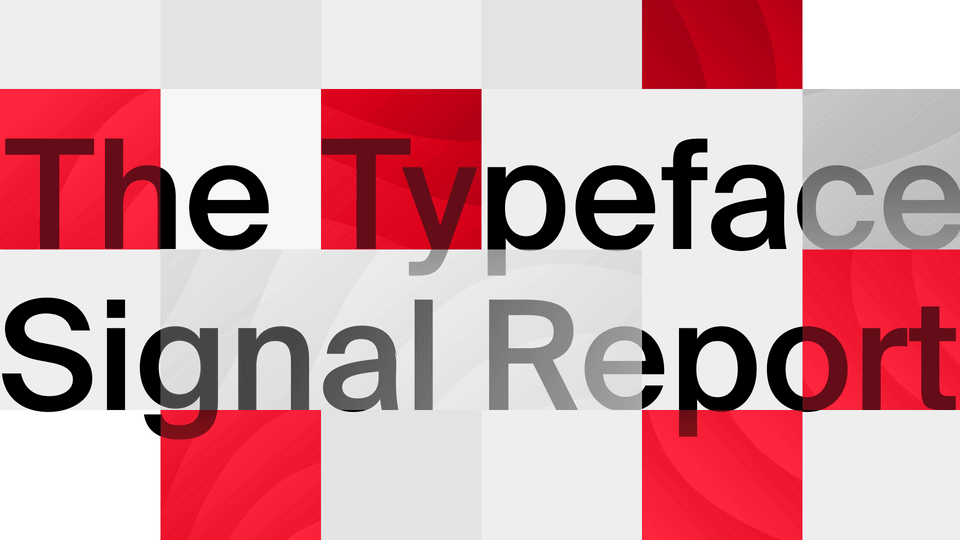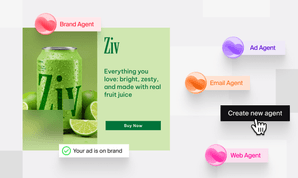AI at Work
Typeface Signal Report: What are Top Marketing Leaders Saying about AI Adoption?

Typeface
October 1st, 2025 · 7 min read

Typeface surveyed more than 200 marketing leaders to get a better understanding of what’s driving their decision-making, and how their AI programs have fared so far.
AI impact is already here: 53% of the marketing leaders we surveyed said they have reorganized their team or updated roles and responsibilities thanks to AI. However, despite the increased prevalence of AI usage, the results are often disconnected. That’s because — as 61% of respondents confirmed — teams are primarily using AI at the individual level, rather than through systems and platforms that enable collaboration.
Too many AI projects stall in the pilot phase because teams treat them like tools, not transformations. The data shows it clearly. Most marketers are still using AI in pockets, at the individual level, instead of rethinking how teams and workflows need to evolve. Real ROI only comes when leaders focus on the people side of change, including building trust, new habits and shared systems that make AI scale across the enterprise.
- Jason Ing, CMO at Typeface
This research is part of The Typeface Signal Report — a new industry insights series that spotlights the signals redefining marketing in the age of AI. Designed for CMOs, brand leaders, and performance marketers, the report delivers data-driven perspectives to help leaders navigate transformation with clarity and confidence.
Here are the four key themes that we’re seeing emerge from the data.
AI is reducing how much marketers spend on agencies
95% of marketing leaders said there’s a rising desire for content, but at this time, only 14% of leaders are completely confident that they have the tools to keep pace.
Still, there’s strong sentiment that the right AI implementation could solve most or all of this problem — 83% of our respondents said fully automating content creation would reduce their agency spend still more (with 11% saying they would eliminate their use of agencies altogether).
Going even further, we learned that 73% of teams that have successfully adopted AI agents have decreased their agency content creation spend as a result (compared to 0% of those who don’t).
Marketers are too bogged down in low-value tasks
Marketing is a creative process: 84% of the leaders we surveyed said that their role is more about creativity than project management.
However, they’re still spending more than 15 hours per week on tasks they believe could be automated (meaning they have 15% less time to work on things like defining their vision, planning, and strategy). This, in spite of the fact that billions are spent on marketing platforms and technology every year.
When AI rollouts are properly aligned to workflows and systems, marketing teams can automate the time-consuming tasks that currently hold them back from making room for strategic thinking.
But it goes beyond that — ultimately the value of AI to enterprise marketing teams should be calculated in terms of campaign orchestration (that is, strategic coordination and management of multiple marketing campaigns, channels, and touchpoints to create a unified experience across all your customers’ interactions with your brand) rather than simply hours saved.
Campaign execution is too chaotic and fragmented
One benefit that gets regularly touted by AI marketing companies is faster execution. What is much less often discussed is the importance of properly setting up your teams and your organizational workflows to use AI effectively, which is the key to allowing your team to scale the best content, not just the fastest.
There’s always been a tension between the need for speed and personalization — now, that tension is even more acute for marketers whose leaders would like to see even faster execution. 85% of those surveyed said they would like to see campaigns launched in one to two weeks, but most (69%) marketing leaders say they’re still unable to launch new multi-channel campaigns in less than three to four weeks.
Then there’s the issue of tool expansion: The average number of vendors involved in campaigns is six (!), with three-quarters of marketing leaders saying that campaigns require between five and eight vendors/tools.
But there are hopeful signs that when AI rollouts are done right, they have serious impact. For example, 27% of marketers in our survey said that they can leverage AI to execute campaigns in two weeks or less, versus 0% of those who don’t use AI.
Teams are stuck in ‘pilot purgatory’
Building on the previous point — nearly all (95%) generative AI pilot projects fail, according to a recent study from MIT. The reasons vary, but also tie back to the themes we’ve covered above.
First and foremost, people tend to misunderstand the nature of the transition to AI — instead of simply new tool adoption, successful, scaled AI adoption is a transformation of your entire way of working, across your whole team. People are used to adding new tools to existing workflows, or using their own tools in isolation, but this isn’t that.
Case in point: 47% of marketing leaders we surveyed said their AI pilot failed because it didn’t integrate with existing technology or processes.
This touches on a key aspect of AI transformation that is too often overlooked: For a pilot AI program to be successful, the AI agent needs to be trained on, connected to, and empowered to use your organization’s high-quality data. That, and you need to make sure that your team is using it, consistently and collaboratively.
In fact, 72% of those surveyed said that high-quality data that resulted in useful output from AI agents was the key to successful deployments.
It’s not all data in, data out, though — 22% cited a lack of executive sponsorship to make sure that the AI rollout could take root and flourish, and 48% attributed failures to cultural resistance or change management factors.
Other reasons for failures included concerns about compliance or legal issues (56%), lack of technical resources or IT support (53%), and governance concerns related to brand safety (48%).
The key is to have a clear understanding of what it takes, support for all the parts of your organization and team members as they transform their processes, and the right AI partner in your corner.
Get the full picture
For the full findings and more detailed insights, you can read the full Typeface Signal Report here.
Note: We’re continuing this conversation at ADWEEK with a fireside chat: Mad Men 2.0 - AI Raises the Floor, Storytelling Sets the Ceiling with our CMO Jason Ing and ADWeek's Zoe Ruderman, Monday, October 6, 6:30–9:00 PM (+ then stay for a lively networking reception with cocktails).
AI is raising the floor of marketing faster than any shift we’ve seen before, but the ceiling is still human. Don’t miss this provocative conversation and the chance to connect with fellow marketers and industry leaders.
Share
Related articles

AI at Work
The Future of Generative AI: How Agentic AI Is Changing Content Workflows

Dhruv Sood · Product Manager
September 23rd, 2025 · 9 min read

Product
Introducing Typeface Arc Agents

Jason Ing · Chief Marketing Officer
September 16th, 2025 · 6 min read

AI at Work
Why AI Rollouts Fail Without Clear Leadership Context (And How to Fix It)

Ross Guthrie · Customer Success Manager
July 16th, 2025 · 14 min read